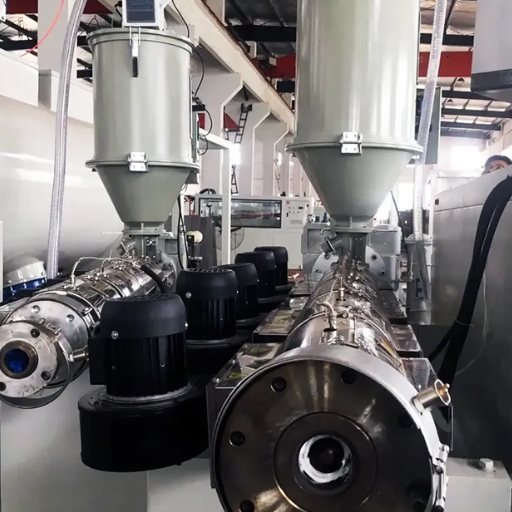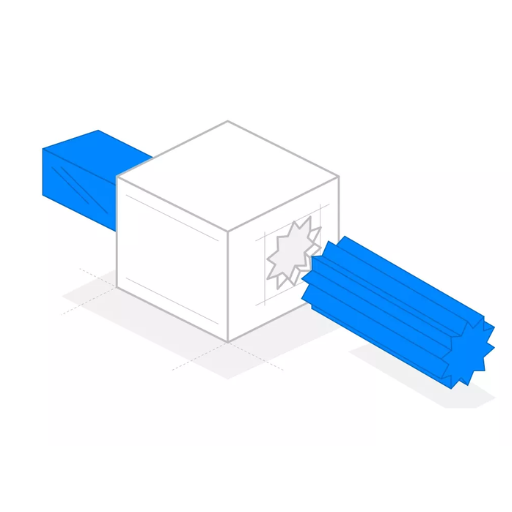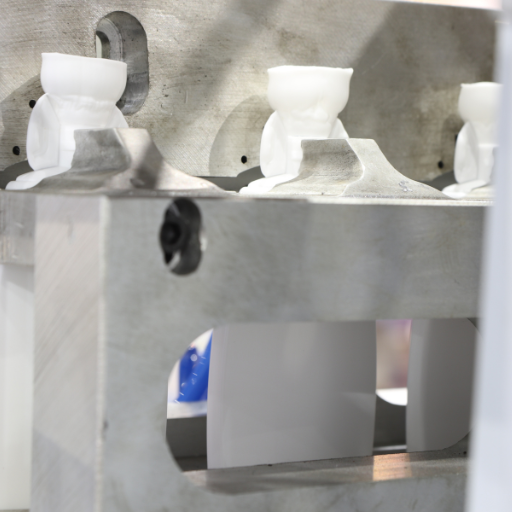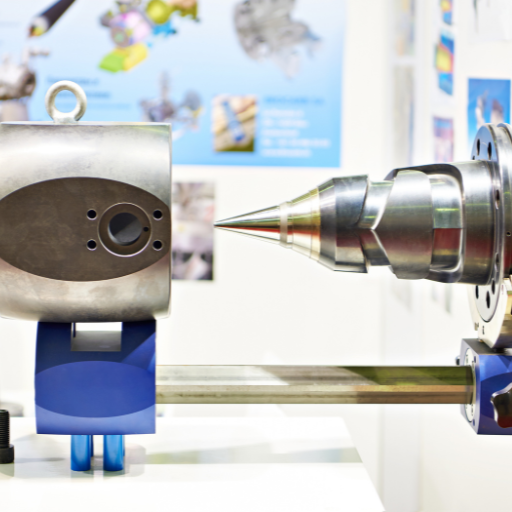What is Extrusion Molding?

Image source: https://www.newtopsilicone.com/
Manufacturing of continuous shapes and articles, by extruding molten plastic through a shaped die, is known as extrusion molding. The process begins with the plastic being fed into an extruder in form of pellets or granules which are melted and homogenized under heat and pressure. Thereafter, this molten plastic is made to flow out through a die having the required cross-sectional shape. On leaving the die, the plastic cools and solidifies thus turning it into lengthwise continuous molded product. This technique is suitable for making things like pipes, tubes, weather strips and plastics sheets.
Understanding the Extrusion Process
Extrusion process encompasses several key stages that lead to consistent production and high quality of plastics. It starts with the feeding of raw plastics materials such as pellets or granules into the hopper. From there they move into a heated barrel where they are gradually melted by mechanical energy from screw rotation and heating elements distributed along its length. When the material turns to melt state it is forced out through some type of shaping device known as a die that makes it take on a continuous profile form made up of viscous liquid rather than solid phase material. After exiting from the dies hot polymer is cooled down either using air or water-cooling methods resulting in final shape that looks like it was shaped when still hot. Finally, this solid product is cut to finished lengths or shapes desired before use in any application deemed necessary. The whole process has a high efficiency ratio thus widely used in pipe manufacturing processes because it can produce pipes with uniform sections.
The Role of Molten Plastic in Extrusion Moulding
The molten plastic plays a crucial role during extrusion moulding since it serves as major component that make up final product design. Raw plastics are changed into malleable molten state due to temperature increment and force applied to them by applying heat and pressure on them until they melt down completely at which point they are extruded. This plasticity makes it possible for the material to be forced through a die that imparts the desired shape to it. While maintaining even temperature and pressure throughout the entire process, the fluid polymer is allowed to flow uniformly through the forming tool during its solidification stage once it has been pushed out of the die. The molten plastic is cooled properly to retain its shape after solidifying at low temperature. Uniformly flowing melted plastic creates identical shapes such as pipes, tubes slabs etc.
Common Applications of Plastic Extrusion
Plastic extrusion is an efficient manufacturing technique employed across various industries due to its efficiency and ability to produce diverse products. Some common applications include:
- Pipes and Tubing: One of the main uses of plastic extrusion is in making pipes and tubing, including products like PVC pipes for plumbing, medical tubing and irrigation systems.
- Plastic Films and Sheeting: Plastic films and sheets are produced by commonly using extrusion process which are used for packaging materials, construction barriers or agricultural films.
- Profiles and Custom Shapes: In construction industry, extruded plastic profiles find application in window frames, weather stripping among other things; custom trims or moldings also use them. It’s thus possible to design complex cross-sectional shapes accurately by employing an extrusion method that allows consistency in mass production.
How Does Injection Molding Work?

Introduction to the Injection Molding Process
Key Components: The Injection Mold and Molding Machine
The injection molding process relies on the injection mold and molding machine as critical elements. An injection mold, made of steel or aluminum, is typically composed of two halves: the cavity and the core. These halves come together to make up the shape we want for our parts. The design of this mold has been carefully worked out so that melt flow and cooling are correct; it also contains feed channels for directing the material and a system of ejector pins for pushing solidified parts out.
However, in case of a molding machine there are three main units which include an injection unit, clamping unit and control system. Then, there is a heating and injecting section which is comprised within the second unit that involves an injection unit. A clamping unit holds both halves tightly during filling and cooling periods with enough pressure to keep them closed together throughout these times. In conclusion, everything goes through a control system that oversees every aspect of production; including temperature, pressure as well as timing such that perfect parts can be produced consistently. As a result they cooperate perfectly enabling mass production of complex precision plastic parts to take place without hindrances.
Advantages and Disadvantages of Injection Molding
Advantages:
- High Efficiency and Fast Production: Injection molding is highly efficient after creating the initial mold, producing large parts volumes within a short time.
- Consistency and Precision: The production process can be very precise especially when making complicated geometries and tight tolerances. All the produced parts are almost similar hence ensuring uniformity.
- Material and Color Flexibility: Different plastic materials can be used since many colours can easily be applied during the molding process.
- Low Labor Costs: Automating reduces manual operations thus bringing down the cost of labor while maintaining repeatability.
- Minimized Waste: Most of the excess material from injection can be recycled thereby reducing waste levels as well as material costs
Disadvantages:
- High Initial Costs: Creating custom molds involves a lot of money which is not affordable in low-volume production.
- Design Limitations: There are some design restrictions because part line and undercut considerations should be satisfied although complex shapes may still be achieved.
- Long Lead Times: Before full-scale manufacturing commences, lead times for starting up like mold designing, testing and others could take long periods.
- Environmental Impact: This method produces a lot of plastic to worry about even though there may be less wastage by it.
- Maintenance Requirements: Continuous high-quality productions require frequent maintenance in both molds and machinery involved.
Extrusion and Injection Molding: What’s the Difference?

Similarities Between Plastic Extrusion and Injection Molding
Primary Differences in the Manufacturing Process
Choosing Between Injection Molding and Extrusion for Your Project
There are several factors to consider when deciding between injection molding and extrusion for your project. Injection molding is suitable for details-intensive, Complex structures that need precision as well as uniformity such as auto parts and housing of consumer electronics. It is good at making components with complex geometries and small tolerances. On the other hand, extrusion is more appropriate for producing long uniform cross section products such as pipes, tubing and weather stripping.
Injection molding usually carries higher initial tooling costs; however it can be cost-effective in large production runs since it can produce high volumes of identical parts quickly. In contrast to that, extrusion economies except where there are only short production runs or continuous profile designs needed which allow different lengths or finishes to be used. Ultimately, this choice depends on specific project requirements – design complexity, volume of manufacturing material selection and consideration of cost implications. Assessing these factors will help you identify the best kind of manufacturing method that suits your needs.
Advantages of Extrusion Moulding

Cost-Effectiveness of the Extrusion Process
Versatility in Manufacturing Plastic Products
Other Benefits of Plastic Extrusion Moulding
In manufacturing, plastic extrusion molding has many more advantages that make it even more desirable. One of the most remarkable benefits is its economical value founded on material as well as labor savings. It reduces production costs by minimizing downtime and maximizing output due to its ongoing operation process. There is also uniformity and precision in plastic extrusion which ensures that there are similar parts with narrow tolerances thus reducing waste and improving reliability of products. For this reason, incorporating multi-layered extrusion allows different materials within one product to enable enhanced functionalities and improved performance.
Moreover, environmental benefits are considerable since recycled materials can be used through the process while producing very little waste, which meets sustainable manufacturing requirements. Finally, developments in technology have made plastic extrusion machines energy efficient hence lowering operational costs and making the process greener.
These factors have made plastic extrusion molding highly beneficial and versatile for a wide variety of plastics production.
Disadvantages of Extrusion

Challenges with the Extrusion Process
Potential Issues in the Quality of Plastic Parts
Extrusion and Injection Moulding: Which is Better?

Comparing the Advantages and Disadvantages of Each Method
Extrusion and injecting molding have their own advantages and disadvantages depending on the manufacturing needs. Here is a comparison of some of their major pluses and minuses:
Advantages of Extrusion
- Cost-Effective for High Volumes: Extrusion is ideal for high volume production hence cost-effective because it has lower tooling costs and faster rates of production.
- Continuous Production: Parts with uniform cross-sections like pipes, tubes, and sheets can be manufactured through this method continuously.
- Material Utilization: Waste from extrusion process is minimized by recycling off-cuts or unused portions.
Disadvantages of Extrusion
- Limited to Uniform Cross-Sections: It is restricted to generating parts with uniform cross-sections which makes it incapable of producing more complex shapes.
- Surface Finish Concerns: Additional post-processing may be required in order to achieve desired surface finish or high precision in case of extruded parts.
Advantages of Injection Moulding
- Complex Geometries: Complex molded intricate parts are made using injection molding because it can produce very fine features or tight tolerances.
- Versatility: This technique can be used to mold a wide range of components starting from small precision pieces up to big automotive parts.
- High Efficiency: At initial molds preparation stage, the process becomes highly repeatable, efficient thus making way for manufacturing large number of identical components.
Disadvantages of Injection Moulding
- Higher Initial Costs: The creation costs for molds are relatively higher since they are large investments especially when making them for low-volume production purposes.
- Material Limitations: Some materials utilized in the injection moulding may not always work well with some complex parts.
Factors to Consider When Choosing a Molding Process
Some key factors to be considered when choosing between extrusion and injection moulding include:
- Part Geometry: Injection moulding is generally the better option for parts with complex geometries, intricate details and tight tolerances. Uniform cross-sections are more suited for extrusion.
- Production Volume: Once the initial moulds have been made, injection moulding is considerably more efficient in high volume production. Extrusion tends to be more cost-effective in low-volume applications as it has less expensive upfront costs of setting up injection moulding.
- Material: The choice of material can also influence the decision. Injection molding is compatible with a wide range of materials including many types of plastics and even some metals whereas extrusion usually works with materials that hold shape uniformly during the process.
- Cost: Injection molding has higher initial tooling costs compared to extrusion such as design and making molds which might be a major investment.
- Surface Finish and Precision: Additional post-processing might be required on extruded parts if the final part needs a high-quality surface finish or high precision.
Real-World Examples and Case Studies
Example 1: Plastic Hangers
Every wardrobe has plastic hangers, which are the most common examples of injection-molded products. Injection moulding is the best option for hangers with intricate design including hooks and clips that need a smooth surface. This makes it possible to manufacture thousands of pieces in a single day while also maintaining consistent quality and high production efficiency making large-scale manufacturing economically feasible for example various types of plastic used like polystyrene or polypropylene.
Example 2: PVC Pipes
Extrusion is the commonly used technique when it comes to manufacturing PVC pipes. It enables continuous production as well as accurate control over dimensions thanks to the uniform cross-sections of pipes which suit extrusion best. This method is particularly advantageous to materials such as polyvinyl chloride (PVC) whose shape is preserved under extrusion conditions. These pipes find use in several applications ranging from plumbing to electrical conduit systems due to their durability and affordability.
Example 3: Automotive Components
Reference sources
-
Veejay Plastic – Top 5 Key Differences Between Extrusion and Injection Molding
- This source explains the major differences between injection molding and extrusion, highlighting their respective applications, benefits, and limitations. It provides a clear and comprehensive comparison suitable for understanding the feasibility of each method.
- Source: Veejay Plastic
-
EMPSLC – Comparing Plastic Injection Molding and Extrusion Molding
- EMPSLC offers an in-depth comparison of plastic injection molding and extrusion molding, detailing how each process works, their typical uses, and the types of products best suited for each method. This resource is valuable for its technical accuracy and practical insights.
- Source: EMPSLC
-
3ERP – Injection Molding vs. Extrusion: Differences and Comparison
- This article from 3ERP provides a thorough analysis of the differences between injection molding and extrusion, including the processes involved, material considerations, and typical applications. It serves as a comprehensive guide to understanding these manufacturing techniques.
- Source: 3ERP
Frequently Asked Questions (FAQs)
Q: What is the main difference between injection molding and extrusion?
A: The primary difference between injection molding and extrusion lies in the process and the shapes they produce. Injection molding involves injecting molten plastic material into a mold to create complex, three-dimensional shapes. Extrusion, on the other hand, pushes molten plastic through an extrusion die to produce continuous, uniform profiles such as pipes and sheets.
Q: What types of plastic are commonly used in injection molding?
A: Common plastics used in injection molding include thermoplastics such as polypropylene, polyethylene, polyvinyl chloride (PVC), and polystyrene. These polymers are chosen for their ability to be melted and reshaped multiple times.
Q: What are the advantages and disadvantages of the extrusion method?
A: Advantages of the extrusion method include a continuous production process, the ability to create complex cross-sections, and high efficiency in producing long lengths of material. Disadvantages include limited complexity in the three-dimensional design and potential for die swell, where the plastic expands upon exiting the die.
Q: How does the plastic extrusion process work?
A: The plastic extrusion process involves feeding plastic resin into an extruder where it is melted by heat and mechanical shear. The molten plastic is then forced through an extrusion die, forming a continuous shape which is cooled and cut to desired lengths.
Q: What is the role of an extrusion die in the plastic extrusion process?
A: An extrusion die determines the shape and size of the finished profile by shaping the molten plastic as it is pushed through. The design of the die is crucial for achieving the desired product dimensions and quality.
Q: How is injection molding vs extrusion used in the industry?
A: Injection molding is used to manufacture complex, three-dimensional parts such as automotive components, consumer goods, and medical devices. Extrusion is typically used to produce long, continuous shapes such as piping, tubing, and sheet materials.
Q: Can you explain the continuous production process in extrusion?
A: In extrusion, a continuous production process means that once the extruder starts, it can produce an indefinite length of material without interruption, as long as there is a supply of raw plastic resin. This is especially efficient for high-volume production of items like pipes and plastic sheets.
Q: What is a blow mold and how does it differ from other plastic moulding processes?
A: A blow mold is a type of mold used in blow molding, where air pressure is used to inflate soft plastic into the shape of a mold cavity. This process is different from injection molding, where plastic is forced into a mold, and from extrusion, where plastic is pushed through a die to create long profiles.
Q: What factors should be considered when choosing between injection molding and extrusion?
A: Factors to consider include the complexity of the part, the production volume, material type, and the desired dimensions. Injection molding is ideal for producing detailed, intricate parts in large quantities, while extrusion is better suited for continuous, uniform shapes.
Q: What is the difference between extrusion and injection molding in terms of applications?
A: Extrusion is generally used for producing continuous lengths of plastic products, such as pipes, profiles, and sheets, where the cross-section remains consistent. Injection molding is used for creating complex, precise parts that require intricate detail and dimensional accuracy, such as housings, lids, and various industrial components.








